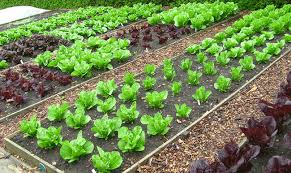


Scientific Name: Anethum graveolens
Common Name: Dill
Origin: Mediterranean region, Southern Russia
Introduction
Dill is an aromatic herb known for its feathery leaves and distinct flavor. It is widely used in culinary dishes and for its medicinal properties. This guide provides comprehensive instructions on cultivating dill and explores its health benefits.
Read more related: Youth Programs in Agriculture
Soil Preparation
Optimal Soil Conditions
Dill thrives in well-drained, sandy or loamy soil with a pH between 5.5 and 6.5. It prefers soil that is moderately fertile and can tolerate slightly acidic conditions.
Soil Testing and Amendments
Before planting, conduct a soil test to assess the pH and nutrient levels. Amend the soil with organic matter such as compost or well-rotted manure to improve soil structure and fertility. Adjust the pH if necessary with lime to raise it or sulfur to lower it.
Seed Selection and Sowing
Choosing the Right Variety
Dill is typically grown from seeds. Common varieties include ‘Fernleaf‘ (compact variety), ‘Bouquet‘ (standard variety), and ‘Dukat‘ (vigorous variety). Select a variety based on your culinary preferences and space available for growing.
Seed Preparation and Sowing Techniques
Directly sow dill seeds outdoors in early spring or late summer/fall. Plant seeds 1/4 inch deep and 12-18 inches apart in rows spaced 18-24 inches apart. Keep the soil consistently moist until germination occurs, typically within 10-14 days.
Planting
Spacing and Depth Requirements
Thin dill seedlings to 12-18 inches apart to allow for proper air circulation and prevent overcrowding. Dill has a taproot system, so avoid disturbing the roots during transplanting.
Companion Planting Benefits
Dill is a beneficial companion plant for cabbage, cucumbers, and lettuce. It attracts beneficial insects like hoverflies and predatory wasps, which help control aphids and other pests.
Watering
Watering Schedule and Methods
Water dill regularly, especially during dry spells. Ensure the soil remains consistently moist but not waterlogged. Avoid overhead watering to prevent fungal diseases.
Importance of Moisture Consistency
Consistent moisture is crucial for young dill plants to establish strong roots. Once established, dill is moderately drought-tolerant but benefits from regular watering during dry periods.
Fertilization
Fertilizer Type: Balanced fertilizer (e.g., 10-10-10)
Application: Apply a balanced fertilizer at planting time and then every 4-6 weeks during the growing season.
Incorporate a balanced fertilizer into the soil at planting time to provide essential nutrients. During the growing season, top-dress dill with compost or apply a diluted liquid fertilizer every 4-6 weeks to support continuous growth and leaf production.
Pest and Disease Management
Common Pests and Diseases
Dill is relatively pest-resistant but can attract aphids, spider mites, and caterpillars. Diseases such as powdery mildew and damping-off can occur in humid conditions or with overwatering.
Natural and Chemical Control Methods
Encourage beneficial insects like ladybugs and lacewings to control pest populations naturally. Use insecticidal soap or neem oil for persistent pest problems. Practice crop rotation and good garden hygiene to minimize disease risk.
Harvesting
Best Practices for Harvesting
Harvest dill leaves and seeds as needed once the plants are well-established and actively growing. Use clean scissors or garden shears to snip the leaves or entire stems. Regular harvesting promotes new growth and prevents the plants from flowering too early.
Handling and Storage
Handle dill gently to avoid bruising the leaves. Use fresh dill immediately or store it in the refrigerator for up to a week. Dill leaves can be frozen or dried for longer storage. To dry dill, hang small bunches upside down in a dark, well-ventilated area until they are crisp.
Health Benefits of Dill
Nutritional Value
Dill is rich in vitamins A, C, and folate, as well as minerals like calcium and manganese. It contains flavonoids and monoterpenes, which contribute to its health-promoting properties.
Medicinal Properties
Dill has been used in traditional medicine for its digestive, anti-inflammatory, and antimicrobial properties. It can help alleviate digestive issues, reduce inflammation, and promote overall digestive health. Dill seeds are often chewed or brewed into tea for their medicinal benefits.
Conclusion
Growing dill is rewarding due to its culinary versatility, aromatic flavor, and medicinal properties. Whether grown in gardens, containers, or herb beds, following these detailed cultivation practices will help you grow robust and flavorful dill plants. The ability of dill to attract beneficial insects and its nutritional value make it a valuable addition to any herb garden.


3 thoughts on “Dill: Cultivation & Health Benefits”